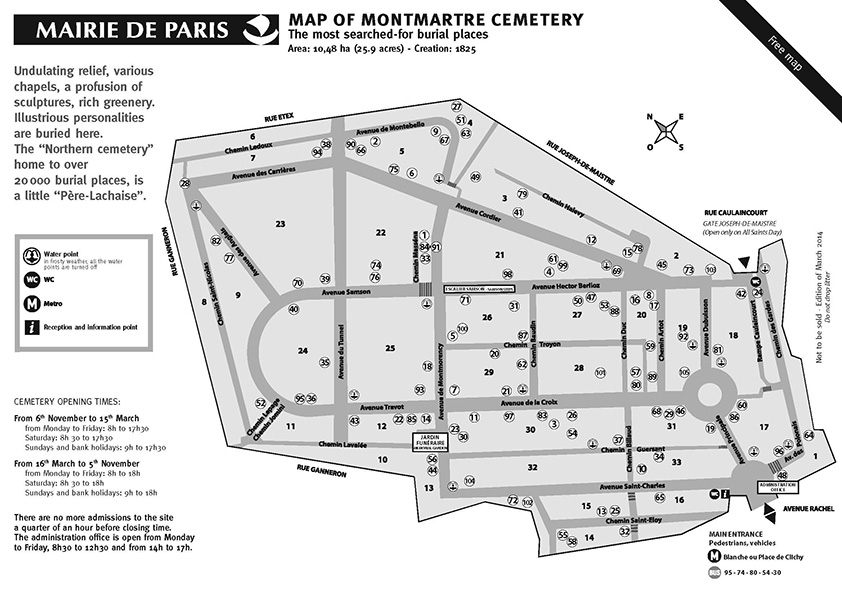Siné
Fun Facts
In 1965 Siné became involved in a power struggle at Penguin Books. During an attempt by chief editor Tony Godwin and the board of directors to remove the company founder Allen Lane, Lane stole and burned the entire print run of the English edition of Siné’s book Massacre, which was reportedly deeply offensive.
Siné received the Prix de l’Humour noir in 1955 for his collection Complainte sans Paroles.
Cemetery Information:
Final Resting Place:
Cimetière de Montmartre
20 Avenue Rachel
Paris, , 75018
France
Europe
Map:

Grave Location:
Division 30Grave Location Description
As you walk down Avenue de la Croix which runs the length of the cemetery, look for the intersection of Chemin Duc and Chemin Artot. Between these two intersections and about 30 feet off of Avenue de la Croix look for the green cactus sculpture behind the large mausoleum that marks the final resting place of Siné.


